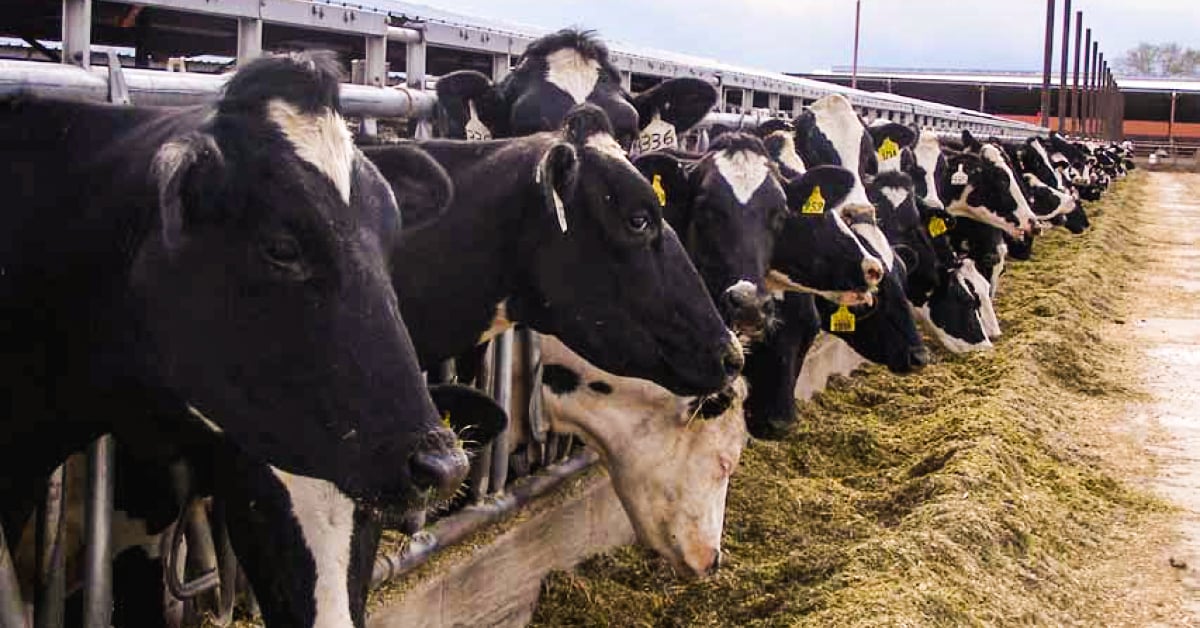
Often, there are developments in feed science that benefit both humans and animals. Intermountain Farmers Association has teamed up with R&D Life Sciences to produce a product that could help both man and animal. Mega 3™ is a product that combines sound nutrition with manufacturing technologies to produce a product that contains omega-3 fatty acids.
Calories In, Calories Out
Early in my health education, I remember hearing the phrase, “Calories in, calories out.” This phrase was referring to energy balance in humans. The concept is that to lose weight or to improve athletic performance, one must alter the number of calories consumed to meet the physical requirements (or calories burned) of an individual. This is partially true, but doesn’t account for specific nutrient needs.
In many livestock or production animal diets, we try to get the most out of each pound of feed. This is done to improve health of the animals, meet specific dietary requirements, reduce environmental impact, and provide high quality end products to the consumer. This is sometimes the opposite of most first-world diets that we, as humans, consume. Often the goal is to eat an abundance and gain little.
Additionally, most production animals have nutritionists, and the bulk of people are left to make dietary decisions based on trends and opinions of outspoken but often under-informed people.
The Benefits of Mega 3™
The Mega 3™ product was originally developed by Dick Kortansky, DVM, to improve reproduction in production animals, provide omega-3 fatty acids in animal protein products for human consumption and improve health and feed efficiency.
IFA began manufacturing this product at the beginning of 2017. Multiple dairies have started feeding this product, and the results are favorable. While it is too early to determine the effects on reproduction, some producers have seen increased milk production and better transitions in their cows.
For example, pound for pound, not all protein sources are the same. There are many producers that realize that the percent of crude protein in a ration is less important than the specific amino acids. Results from amino acid balancing has decreased waste, improved feed efficiency, supplied healthier animal proteins, helped reproduction and increased profitability. Research also supports the need of specific fatty acids. Consumption of omega-3 fatty acids (ALA, EPA and DHA) is encouraged by nutritionists in human and animal diets. There are many benefits to specific fatty acids, and Mega 3™ is a rich source of linolenic acid (ALA).
Ruminant diets with high levels of unsaturated fatty acids are detrimental to the rumen microflora, and typically, undergo biohydrogenation. The manufacturing of the Mega 3™ targets an end-product that allows the bulk of the fat to pass through the rumen (avoiding biohydrogenation) allowing absorption of the desired fats in the small intestine.
There is research that supports the use of specific fatty acids. Research has been conducted with the Mega 3™ product and the results of that study are available through any IFA feed representative. Specific species feeding guidelines are also available.
Please consider making Mega 3™ part of your feeding program with the help of IFA feed and nutrition. This may be part of what your livestock, show animals, layers, and companion animals need to reach the next level of health and vitality.
Discover IFA Feed & Nutrition Services
Written by Laun Hall, PhD, and originally published in the IFA Cooperator magazine (vol. 83, no. 2) Summer 2017. Laun is a Feed & Nutrition Advisor at IFA South Region Feed.

